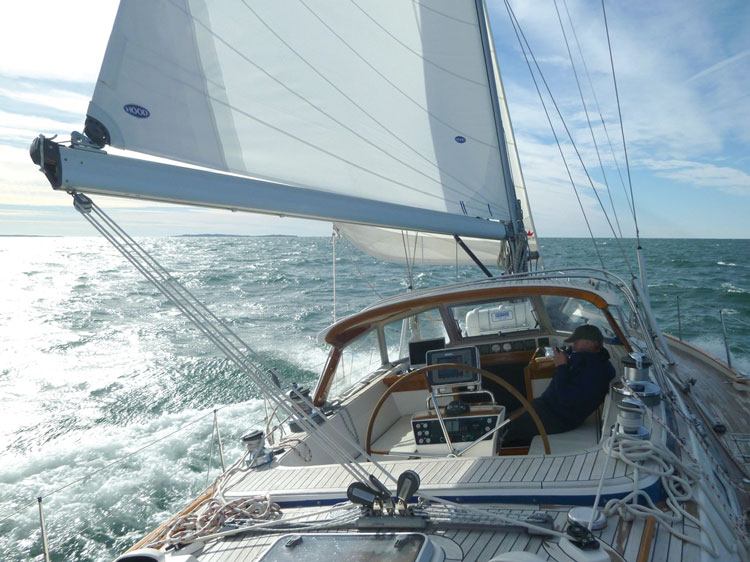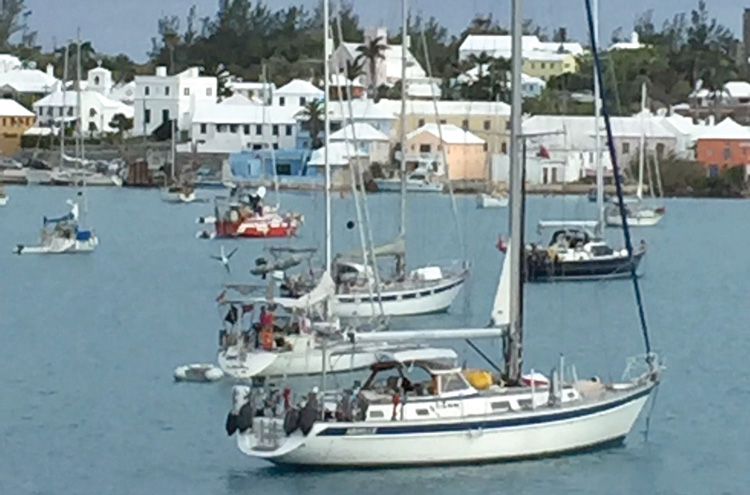Your Guide to Choosing Important Sailing Features
You hear it often enough that choosing a sailboat is an exercise in compromises. It is pragmatic to accept that no single sailboat will have all the features one desires, and ultimately it becomes a matter of compromise on some features to select a boat with its remaining features that meet most of your important needs.

However, it turns out that any sailboat will have such features that as you maximize a few, you impact others negatively. Putting it another way, you can’t have a boat that can sleep 10, accommodate a party of 20, go fast, be strong enough to round Cape Horn, and be trailerable all at the same time. That is the nature of sailboats and their design.
If you were to engage a naval architect to design your hypothetical dreamboat, you will need to give him or her a design brief. The design brief describes the intended form and function of this boat in a few key narrative sentences. Being able to distill your vision of this boat in that way will guide the design process and help you focus on what important features to maximize above all other competing ones.
Here are six of these critical contradicting features to consider:

1. Hull strength and build quality
Hull strength can be achieved with design using standard boat-building materials of the industry or with high-tech, high-strength, expensive composites of carbon fiber, Kevlar, and new materials to be used in the future. The standard boat-building materials will yield a light-to-medium to heavy-displacement boat. The high-tech composites will provide a light-displacement boat with higher strength. Cost is driven up in both cases.
You can’t have a strong boat that is also cheap. That is a contradiction. Build quality is evident in the finish details and total hours for construction and not just the cost of raw materials used. Builders that are spending 10,000 man-hours or more on building one boat cannot be compared to those spending 4000 man-hours or less assembling prefab boat sections together. If hull strength and quality of build are an important criterion for you, then select boats from known builders that have earned that badge of high quality.
If you are not sure who these builders are, I highly recommend reading “The World’s Best Sailboats” (Vol. 1 and 2) by Ferenc Máté very slowly over a few months. Be forewarned, once you look at all the details and fabulous photos of the most lovely sailboats in the world shown in these two books, you will never be satisfied with just any sailboat. You have been duly warned.
2. Living space
The living space onboard a sailboat has to serve many purposes. Space is used differently when on a passage offshore. That same space serves different needs once at anchor. Yet another need arrives when entertaining friends and guests. Space is also used differently when having family and friends as guests during passages and during ports of call. Choosing which are the most important to least important of these functions will determine if the need is for maximum cockpit size and a salon size that matches.
Will the galley be for sea duty or just entertainment parties? Or will having a small cockpit and plenty of handholds be the deciding factors when the boat is heeled and surfing down big seas? When offshore with the boat being tossed by wind and waves, large open space is difficult to walk safely through. If entertainment is the most important factor, the doublewide size of a catamaran salon and cockpit cannot be beat. If accommodating lots of guests along your way, generous cabins with attached private heads will be important factors.
By defining which space function has the highest priority, the key spaces will determine the features you need and their primary purpose.
3. Storage capacity
There is no such thing as a boat with too much storage space. I am always bemused when a new sailboat owner describes their new purchased boat as one with oodles of storage space. Boat stuff tends to grow with the available storage space when you are not looking. That is one of the laws of the sea.
When we sold our 28-foot sailboat and moved up to a 35-foot sailboat, our personal effects seemed to take up so much less space than the available storage on the 35. It didn’t take long for all available space to be filled on the 35, just as it was on the 28. I am of the belief that boat stuff will multiply to fill available storage space given just a short period of time.
The only way to gain any control is with strict disciplined storage organization and ruthless culling skills. If you find something that you have not used or needed during the past 12 months or boat season, it has no place onboard. Be ruthless. It must go.
Also having a log or catalog of where each item is stored is a vital way to keep track of what is onboard. For food storage, keeping track of quantity of any one item onboard and what has been consumed will help the provisioning ritual. Once your boat is set up and has all the things you need onboard, bringing any one new item will require removing one old item. This is the secret of keeping boat storage capacity in balance at all times.
4. Sailing performance
What is most important to you in this boat? If it is going fast around the race course and winning trophies, then a lightweight speedster of a boat with a big sail plan is what you need. If it is arriving rested in a blissful relaxed state after a weeklong to 10-day passage? Then, a bluewater passagemaker is what is needed. If the primary objective is sailing in the Bay and occasionally joining a race or two, a mid- to moderate-displacement racer is the right boat. If speed and time are not a factor, a pocket cruiser might just be the perfect boat. A few Flicka 20 boats have circumnavigated the world at a relaxed leisurely pace.
The other components of sailboat performance are sails and the skills to sail them well. Investing in well designed and fabricated sails and learning the art of sailing will be half of the boat-performance equation. This is especially true when it comes to light-wind sailing. It is an art form in itself to be mastered. Your ultimate goal is to be able to keep your boat moving when the wind is wisping at four to six knots and not need to turn on the motor.
5. Latitude range
A sailboat being used in mid-range latitudes or tropical latitudes will not be concerned with iceberg hazards and extreme cold conditions, while a sailboat intended for high-latitude sailing will need to be designed and equipped for these harsh requirements. Metal hull boats are generally preferred for such expeditions. Insulated hulls are also a requirement. Robust heating systems are considered an essential feature.
Other design details include sealed compartment bulkheads and reinforced companionway doors with dog latches. An enclosed, full-view pilothouse that can shield you from all the elements is also an essential feature.
What latitudes you intend to sail greatly determines the important features needed in that boat. Of course some have ventured far and wide in wooden boats to both poles. Could you do that as well? I suppose, but the real question is would you want to? Would your crew want to?
6. Passage range
It is tempting to think of a sailboat in terms of the complete distance planned. If it were a Caribbean Loop, it would be several thousand nautical miles. An Atlantic Loop can be up to 10,000 nautical miles. Around the world would be 22,000 to 25,000 nautical miles. But the truth of the matter is that most passage legs last typically one week to around 10 days. Then come a few special passages that are three weeks to a month long.
As an example, once through the Panama Canal, one can go south to Ecuador for a stop waiting for a weather window and cross the Pacific to the Marquesas. That would be one of the long passages and on average last 21 days to four weeks. Knowing this will help determine boat features, such as fuel tank size, fresh water tank size, motoring range, and food provisioning needs. A common mistake that we all do when we start cruising is thinking that we will not be able to find this or that item along the way; therefore we better stock up a year worth of it onboard. Valuable storage space will be used for this one item that will make it difficult to stow other things.
By all means, if having extra crunchy peanut butter is very important to your well-being, having a few months’ supply might be wise. You can also request that all visiting friends, family, and crew come with more jars along the way. The point is not provisioning for a year or two, but rather for a month or two at the most. Three months at the maximum. If cruising were meant to be where Costco stores are located around the world, we would be planning for very different ports of call.
With a cruising goal of reaching the Bahamas, using the ICW, and spending one winter season there, the boat will only need to handle overnight passages on occasion. That is a weekender boat with a good motor. With a cruising goal that includes visiting Bermuda, a weeklong passagemaker is what you are looking for. With more ambitious cruising plans of crossing the Atlantic or Pacific or going offshore routes to Caribbean, the month-long passagemaker is what is needed.
The passage limit will also greatly influence all the energy management decisions you make. Use and size capacity of solar panels, wind generation, hydro-generation, even the type of autopilots onboard will be dictated by how many nautical miles and days of passage you intend to undertake along the way.
Article by Bassam Hammoudeh




